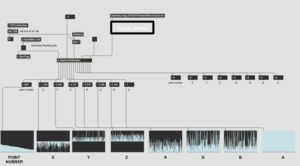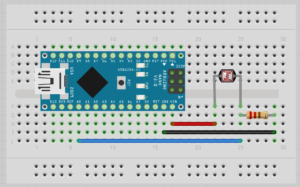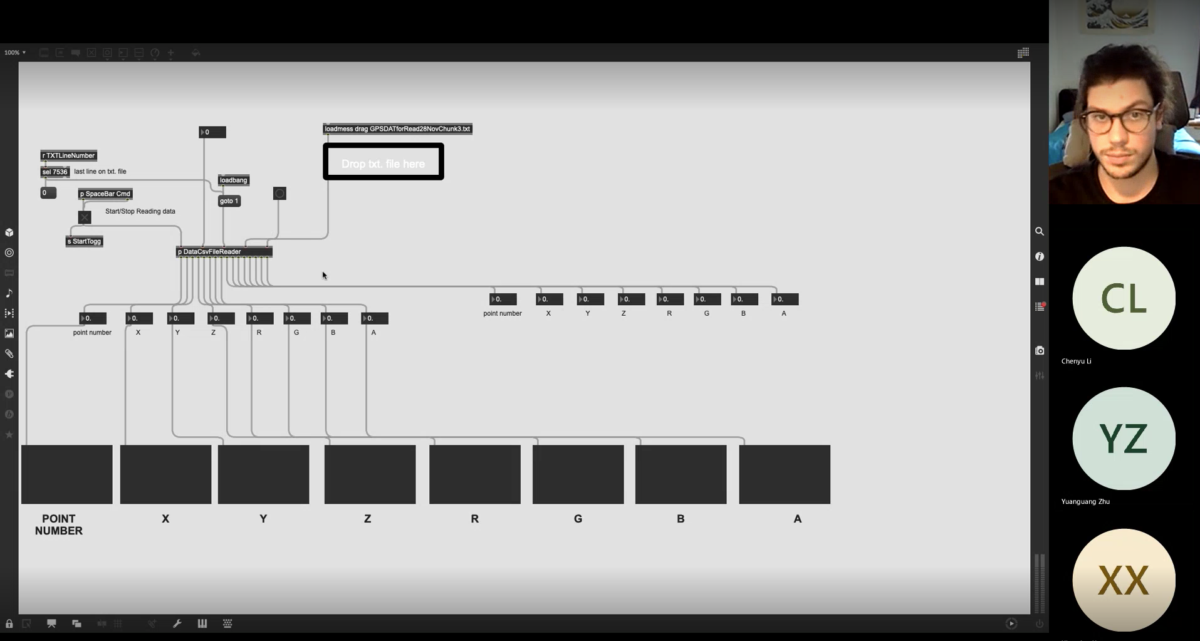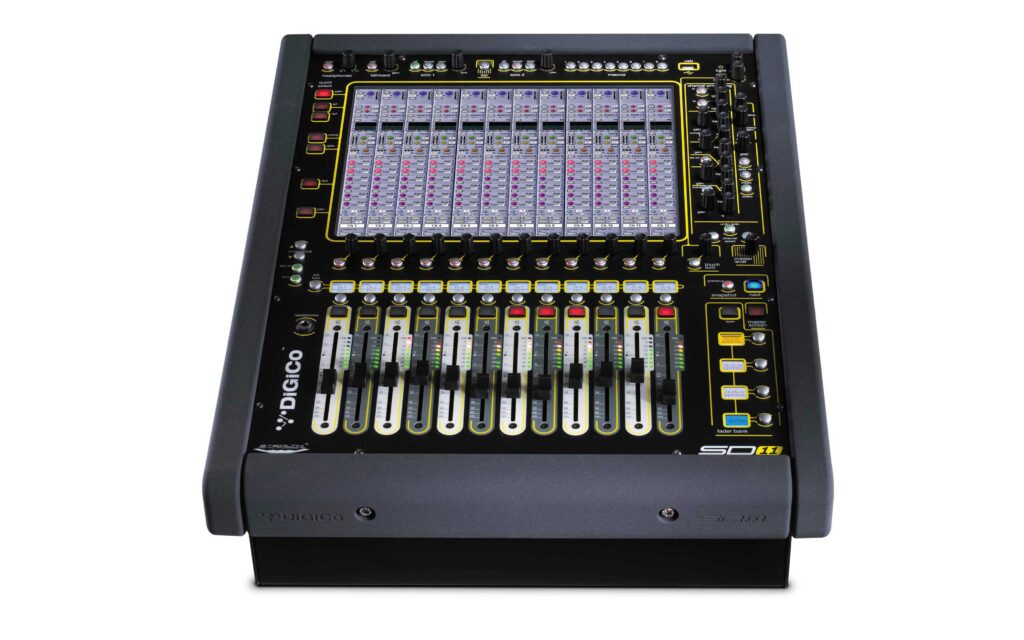On the 23 Feb, the first Sound department meeting took place. All parts of the sound team attended the meeting and took part in its content. The session was structured across each sound task, as mentioned in the latest sound post. Each team member had the opportunity to catch up and show individual progress on their coordinated task. A collective effort also allowed for planning the future steps of each job.
This post will briefly attempt to overview the key topics, discussions, and decisions for each underlined sound task during this meeting. The meeting took place in the following order:
-
-
- Soundscape Capture: Proposal and Planning;
- Place Sonification: Data-Reading method demonstration and future Creative approaches;
- Sound Installation: Proposal Review and further planning;
- Interactive sound: Resources overview.
-
The meeting recording can be found here: DMSP Sound meeting #1 (2).vtt
Soundscape Capture
The soundscape capturing was the first task to take place as a topic of this meeting since it was agreed to be the current priority of the project since it envisions this to take its recording stage in the upcoming days. The respective coordinating member, Chenyu Li, presented this segment.
The presentation started off with laying off the possibilities for field-recording methods along with the respective needed resources. A wide range of solutions came up:
-
-
- Shotgun mic to record conversations by people on-sight;
- Contact microphones to capture steps and rail handlings;
- Matched Pair condensers for stereo recording;
- Ambisonic recording.
-
After some analysis, it was agreed that the ambisonic solution would face difficulties coping with envisioned set-up. Contact microphones would not be practical for capturing footsteps on stone surfaces, nor would the railing add significant sonic value to the final product. When it came to the shotgun mic solution, although of great interest, it brings up matters of ethics and privacy and therefore was set to be considered on-sight. The matched pair solution was agreed to be the main focus of the recording plans. Adding a second pair facing the opposite direction was further thought out to work a rear stereo image for the envisioned surround sound system. Therefore, the project plans to use pairs of Schoeps MK6(cardioid pattern)/MK4 small-diaphragm condenser microphones with a ZOOM F8 recorder.
Place Sonification
Place Sonification was presented by the coordinating member David Galego, who demonstrated current developments, followed by a discussion on future creative approaches for this part of the project.

The demonstrated methods showed how to export readable point cloud data for sonification and integrate these as parameters in a functioning MAX/MSP patch. This demonstration showed the following developments
-
-
- Exporting XYZ+RGBA data from cloud compare;
- Sorting XYZ+RGBA data in excel;
- Exporting XYZ+RGBA data from excel to readable txt. file;
- Integrate data into data reading MAX/MSP patch;
- Demonstration of patch functionalities and variable attribution.
-
The MAX/MSP demonstration patcher along with txt. file can be downloaded here: https://github.com/s2272270/PlaceSonification.git
After this demonstration, a discussion on the creative approach to the further development of the patcher came into place. This discussion reflected on two possible methods to sonify this data:
-
- Processing/granulating the previously recorded soundscape;
- Using parameters to generate sound through the means of MSP;
Although these approaches are not mutually exclusive, the sense of priority to either one or the other was the aspect under discussion. This discussion reached the coordinator member leaning towards processing methods, whereas the rest of the collective towards proper generative contexts. As such, it was set that the coordinator would bring up this discussion in the next general meeting with the Digital Design Media collective taking part in this reasoning since it was understood that the visual aspect and project concept play deciding factors in how it should sound.
Sound Installation
Sound Installation was presented by the coordinating member Yuanguang Zhu (YG). This segment reviewed aspects mentioned in the previous blog post, “YG – Preparation for Surround Sound Production”, posted on the 13th of February, 2023. After a careful review of aspects such as the envisioned system’s wiring design and set-up infrastructure, a series of factors were altered and agreed upon:
-
-
- The collective understood that the speaker set-up should not be based on truss fixed points, as the respective truss mount kit will likely not be an available resource.
- The collective identified a wiring incongruence between the proposed interface “RME Fireface UC/X” and the Genelec 8030A since the interface provides its analogue outputs as 1/4″ TRS, whereas the Genelec speakers input XLR.
- The suggested interface, “RME FireFace UC/X”, does not provide a functional digital connection since it provides ADAT and coaxial ports instead of USB or CAT network protocols.
- The collective understood the field recording proposed solutions to be out of the scope of the task.
-
Therefore the collective suggested for this task look further along the following lines:
-
-
- To plan a speaker set-up that is ground-stand based;
- To look into interface options that provide at least 8 XLR DA outputs.
- To look into an interface solution that provides a reliable digital connection such as USB, DANTE or standard CAT5e.
- To look into a component that may allow tuning of the system.
- To update the proposal in the post “YG – Preparation for Surround Sound Production”.
-
Having described the interface’s characteristics and the system’s need for tuning possibilities, the collective suggested looking into the possibility of having the university’s Digico SD11 mixing desk.
Interactive Sound
The Interactive Sound segment was presented by the coordinating member Xiaoquing XU.
This segment analysed the available resources for an Arduino system that could read the project’s envisioned user interaction (step-up/step-down), and turn it into a sonic response. While looking into different hardware possibilities, the ideal digital support agreed on was again MAX/MSP. After careful analysis and some discussion, the following solutions were understood as the most simple yet effective:
-
- A Max/MSP patch that inputs two live contact microphones (one on each step) react once a certain dB threshold is surpassed.
- An Arduino system that uses a sensor (distance sensor or light sensor) and feeds live data into a Max/MSP patch that can then be interpreted and sonified.
The collective advised the Arduino sensor option not only to be the most likely to present more accurate results but also to have various documented resources on how to perform these solutions, like the diagram presented below for using a light sensor.

More sound meetings will occur in the upcoming weeks, so we will keep you posted.




